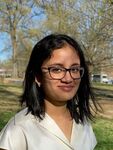Blog Author: Archita KhaireDiabetes is one of today’s most significant global problems. As per International Diabetes Federation, more than 450 million people have diabetes globally, and the count is projected to increase to 700 million by 2045. It is one of the fastest-growing emergencies causing 4 million deaths worldwide every year. Image Credit: International Diabetes Federation You may not feel any symptoms from diabetes at first. High blood sugar (hyperglycemia) and high levels of insulin (the hormone that manages blood sugar levels) start to damage your body silently many years before you’re diagnosed with diabetes. Glucose is the fuel that feeds your body’s cells, but to enter your cells, it needs a key. Insulin is that key. People with type 1 diabetes (#T1D) don’t produce insulin. People with type 2 diabetes (#T2D) don’t respond to insulin as well as they should and, later in the disease, often don’t make enough insulin. The leading causes of T2D include lifestyle, physical activity, dietary habits, and heredity, whereas T1D is thought to be due to autoimmunological destruction of the Langerhans islets hosting pancreatic-β cells. Diabetes Predictions Numerous algorithms and approaches have been applied, such as traditional machine learning algorithms, ensemble learning approaches, and association rule learning, to predict diabetes. Here are a few examples: SVM for diabetes prediction ANT_FDCSM for diabetes detection Rotation Forest Image Credit: Critical-depth Raman spectroscopy enables home-use non-invasive glucose monitoring (plos.org) With advances in smart wearables and edge computing, researchers are now building non-invasive devices for continuous glucose monitoring (#CGM). Scientists at MIT have shown that they can use Raman spectroscopy to measure glucose concentrations through the skin directly. Diabetic Complications Type 2 diabetes is a complex and progressive disease characterized by various metabolic defects affecting multiple organs. Image Credit: https://doi.org/10.1016/j.amjmed.2013.06.007 Chronic diabetic complications include heart failure, diabetic neuropathy, nephropathy, retinopathy, and diabetic foot. Multiple machine-learning algorithms have been developed for the automatic detection of diabetic neuropathy. Diabetic nephropathy (DN) is defined by elevated urine albumin excretion or reduced glomerular filtration rate (GFR), or both. This severe complication causes destructive scarring in diabetic patients. Pathologists usually classify DN based on a visual assessment of glomerular pathology using immunofluorescence microscopy and electron microscopy. AI scientists are using image classification algorithms to enhance and fast-track the detection of Diabetic nephropathy. Image Credit: Appl. Sci. 2020, 10(18), 6185; https://doi.org/10.3390/app10186185 For retinopathy as well, researchers have developed image classification algorithms that can detect diabetes from retinal images. Researchers are experimenting with the effectiveness of e-nose technology, using machine learning classifiers, to predict single- and poly-microbial species targeted for a diabetic foot infection. Diabetes Medication and Care FDA has approved an artificial pancreas that automatically monitors blood glucose and provides appropriate insulin doses. Image Credit: Artificial pancreas system upgraded with AI algorithm (medicalxpress.com)
AI methods have found their way into daily self-management of diabetes, mainly in the form of smartphone apps and wearables such as smartwatches: For example, food recognition apps use machine learning methods and cloud-based image analysis and may help people with diabetes to make more informed food choices and insulin treatment decisions. Artificial Intelligence is already transforming diabetes care. It will continue to have a transformational impact on the everyday lives of people with diabetes. References
Comments are closed.
|
Page HitsAuthorArchita Archives
January 2023
Categories |







 RSS Feed
RSS Feed